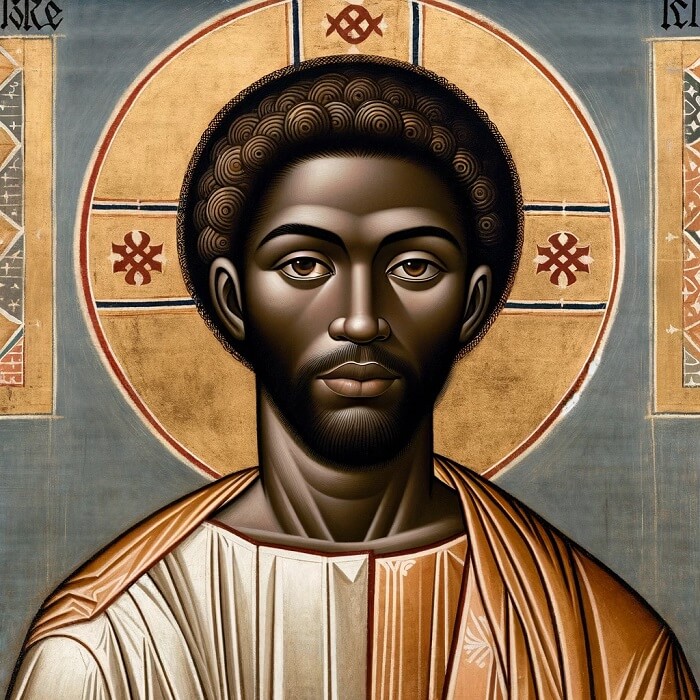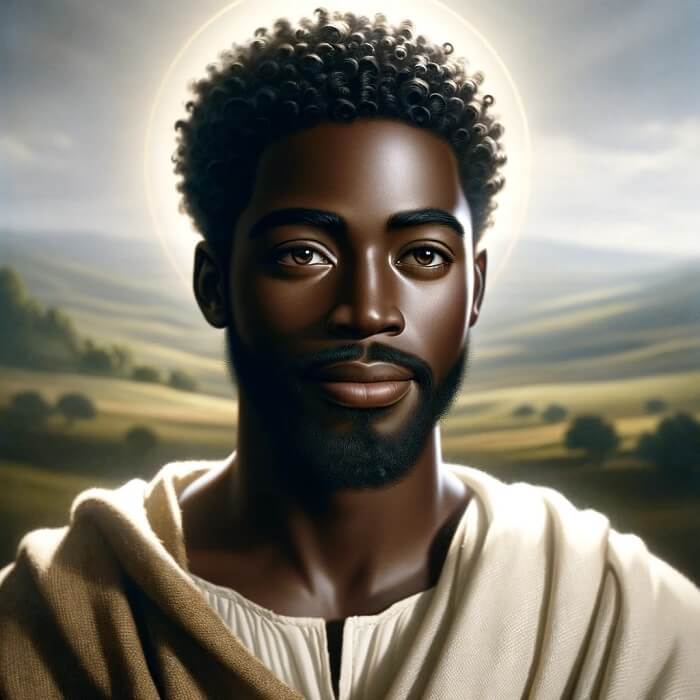The controversy surrounding Black Jesus images is a complex and multifaceted issue that encompasses historical, religious, and cultural perspectives. This article aims to explore the origins and historical context of Black Jesus images, examine religious perspectives on their portrayal, discuss the cultural significance they hold, and delve into the controversies and criticisms surrounding their existence. By examining these different aspects, we can gain a better understanding of the ongoing debate and the impact it has on identity, representation, and cultural appropriation.
Key Takeaways
- Black Jesus images have their origins in the historical context of colonialism and the influence of African spirituality.
- The portrayal of Black Jesus is a subject of debate within Christianity and is viewed differently by other religions.
- Black Jesus images hold cultural significance as symbols of empowerment and challenge the representation of blackness in religious art.
- Controversies surrounding Black Jesus images include accusations of cultural appropriation, arguments for historical accuracy, and opposition from white supremacist groups.
- The debate surrounding Black Jesus images highlights the complexities of identity, representation, and the ongoing struggle for inclusivity and equality.
The Historical Context of Black Jesus Images

The Origins of Black Jesus Images
The origins of Black Jesus images can be traced back to ancient times. Throughout history, people have depicted Jesus in various ways, often influenced by their own cultural and artistic traditions. In some cultures, Jesus has been depicted with darker skin tones, reflecting the diversity of the regions where Christianity spread.
One example of an early Black Jesus image is the Coptic icon of the Black Madonna and Child, which dates back to the 4th century. This icon portrays Mary and Jesus with dark skin, symbolizing their African heritage. The image has been revered by many as a powerful representation of the universality of Christ’s message.
It is important to note that the depiction of Jesus as Black is not meant to replace or invalidate other representations of Jesus. Rather, it serves as a reminder of the diverse ways in which people have imagined and connected with Jesus throughout history.
The Role of Colonialism in Shaping Black Jesus Images
The role of colonialism had a significant impact on the shaping of Black Jesus images. During the era of European colonialism, European powers spread their influence and imposed their cultural and religious beliefs on colonized regions. This included the promotion of European depictions of Jesus as a white figure. As a result, the image of a white Jesus became deeply ingrained in the minds of many people, including those in colonized regions. This colonization and imposition of a white Jesus image contributed to the erasure and marginalization of Black Jesus images.
The Influence of African Spirituality on Black Jesus Images
African spirituality has played a significant role in shaping the depiction of Black Jesus. Spirituality is a central aspect of African culture, and it has influenced the way Black Jesus is portrayed in art and religious imagery.
In African spirituality, there is a strong emphasis on ancestral worship and the connection between the living and the deceased. This belief system often includes the veneration of ancestors and the belief that they can intercede on behalf of the living. This belief in the power of ancestors has influenced the portrayal of Black Jesus as a figure who understands the struggles and experiences of the African diaspora.
Additionally, African spirituality places importance on symbolism and the use of visual representations to convey spiritual concepts. This has led to the use of symbols and imagery in Black Jesus art that are rooted in African spirituality. These symbols often carry deep meaning and serve as a way to connect with the divine.
In summary, the influence of African spirituality on Black Jesus images is evident in the emphasis on ancestral worship, symbolism, and the connection between the spiritual and physical realms.
Religious Perspectives on Black Jesus Images
The Debate within Christianity
The debate within Christianity regarding Black Jesus images is a complex and multifaceted issue. Representation is a key point of contention, with some arguing that Jesus should be depicted as historically accurate, while others believe that a more inclusive representation is necessary. Additionally, theological interpretations play a role, with some Christians viewing the portrayal of Jesus as a person of color as a powerful symbol of diversity and inclusivity, while others argue that it goes against traditional depictions and teachings.
In this debate, historical accuracy is often cited as an important factor. Supporters of historically accurate depictions argue that Jesus was a Middle Eastern Jew and should be represented as such. They believe that deviating from this portrayal can be misleading and may undermine the historical context of Jesus’ life and teachings.
On the other hand, proponents of Black Jesus images emphasize the importance of representation and inclusivity. They argue that depicting Jesus as a person of color can provide a sense of empowerment and affirmation for marginalized communities, particularly Black individuals. They see it as a way to challenge Eurocentric norms and promote a more diverse and inclusive understanding of Christianity.
It is important to note that this debate is not limited to Christianity alone. Other religions, such as Islam and Judaism, also have diverse perspectives on the representation of Jesus. These perspectives are shaped by their own theological interpretations and cultural contexts, further adding to the complexity of the issue.
The Views of Other Religions on Black Jesus Images
While Christianity is the primary religion associated with Black Jesus images, other religions also have their perspectives on this controversial topic. Here are some viewpoints from different religious traditions:
The Cultural Significance of Black Jesus Images
Black Jesus as a Symbol of Empowerment
Black Jesus is often seen as a symbol of empowerment for Black communities. The representation of Jesus as Black challenges the dominant narrative that associates whiteness with power and divinity. It provides a sense of pride and affirmation for Black individuals, who have historically been marginalized and oppressed. By depicting Jesus as Black, it highlights the importance of representation and the recognition of Black people’s contributions to Christianity.
Moreover, the image of Black Jesus serves as a reminder of the resilience and strength of Black communities throughout history. It symbolizes the ability to overcome adversity and find hope in the face of oppression. The representation of Jesus as Black empowers individuals to embrace their cultural heritage and celebrate their identity.
In addition, Black Jesus images inspire social and political activism. They challenge societal norms and call for justice and equality. The image of a Black Jesus encourages individuals to fight against systemic racism and advocate for the rights of marginalized communities. It serves as a powerful symbol of resistance and solidarity.
Overall, Black Jesus as a symbol of empowerment has a profound impact on individuals and communities. It challenges stereotypes, promotes self-acceptance, and inspires collective action for social change.
The Representation of Blackness in Religious Art
The representation of blackness in religious art has been a topic of discussion and debate. It raises questions about the portrayal of Jesus and other religious figures as white in traditional art. This representation has often overlooked the diversity of cultures and races that exist within Christianity and other religions. It is important to recognize that blackness has historically been underrepresented in religious art, and the inclusion of black Jesus images challenges the dominant narrative.
The Impact of Black Jesus Images on Identity and Representation
The impact of Black Jesus images on identity and representation is significant. These images serve as powerful symbols of empowerment for Black communities around the world. They challenge the traditional representation of Jesus as a white figure and provide a visual representation of Blackness in religious art. Black Jesus images have the potential to reshape the narrative of Christianity and challenge the Eurocentric standards that have dominated religious art for centuries.
Controversies and Criticisms Surrounding Black Jesus Images

The Accusation of Cultural Appropriation
Cultural appropriation is a term used to describe the adoption or use of elements from one culture by members of another culture. In the context of Black Jesus images, the accusation of cultural appropriation arises when non-Black individuals or institutions depict Jesus as Black without fully understanding or respecting the cultural and historical significance behind it. This can be seen as a form of cultural exploitation, where Blackness is commodified and used for aesthetic purposes without acknowledging the struggles and experiences of Black people.
It is important to recognize that the accusation of cultural appropriation is not about restricting artistic expression or creativity. Rather, it is about promoting cultural understanding, respect, and sensitivity. By engaging in meaningful dialogue and learning from diverse perspectives, we can foster a more inclusive and equitable society.
The Argument for Historical Accuracy
The argument for historical accuracy in depicting Jesus as a black man is based on the belief that historical evidence supports the idea that Jesus was of African descent. Proponents of this argument point to various historical and anthropological studies that suggest Jesus would have had physical features commonly associated with people of African descent, such as dark skin and textured hair.
Additionally, they argue that the portrayal of Jesus as a white man is a result of European colonization and the whitewashing of history. They believe that the true historical accuracy lies in representing Jesus as he would have looked in his historical and cultural context.
It is important to note that the argument for historical accuracy is not meant to diminish the significance of Jesus to people of all races and ethnicities. Rather, it seeks to challenge the dominant narrative and provide a more inclusive representation of Jesus that reflects the diversity of humanity.
The Role of White Supremacy in Opposing Black Jesus Images
White supremacy has played a significant role in opposing the depiction of Jesus as Black. Throughout history, white supremacists have used their influence to promote a Eurocentric image of Jesus, reinforcing the idea that whiteness is superior. This has led to the marginalization and erasure of Black religious experiences and the perpetuation of racial hierarchies. By denying the existence of Black Jesus images, white supremacists seek to maintain their power and control over the narrative of Christianity.
Conclusion
In conclusion, the controversy surrounding Black Jesus images is a complex and multifaceted issue. While some argue that these representations are a powerful tool for promoting inclusivity and challenging traditional narratives, others believe that they are disrespectful and undermine the historical accuracy of Jesus’ portrayal. It is important to recognize the diverse perspectives and engage in respectful dialogue to better understand the implications of these images. Ultimately, the debate surrounding Black Jesus images highlights the ongoing discussions about representation, identity, and the power of visual imagery in shaping our understanding of history and spirituality.








Leave a Comment